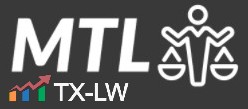The adage ‘Bad facts can create bad law’ applies to IRS penalties, where the agency typically removes penalties for most taxpayers with strong factual support at the administrative level.
Court cases lacking strong facts often result in litigation, leading to numerous court cases where the government prevails. While it is uncommon for taxpayers to succeed in penalty abatement cases in court, there are a few.
Thrane v. Commissioner, T.C. Memo. 2006-269, is one of those cases.
Contents
Facts & Procedural History
The taxpayer was in the mortgage business. He was the sole owner of a Subchapter S corporation.
The taxpayer hired Oliva, Sahmel & Goddard (“OSG”) for tax and accounting services. OSG prepared the business’s 2001 Federal income tax return and the taxpayer’s individual Federal income tax return.
After completion of the audited financial statements, OSG prepared the business’s 2001 Form 1120S and a Schedule K-1, Shareholder’s Share of Income, Credits, Deductions, etc., for the taxpayer, reporting ordinary income of $587,938 from the business and $412,000 in distributions.
An error was made when the $173,093 in officer compensation was counted twice, resulting in an erroneous understatement of ordinary income. The taxpayer filed his 2001 Form 1040 using Schedule K-1 from the business, which contained the error, and reported $378,428 in income from the business.
The IRS pulled the return for audit and eventually issued a notice of deficiency. The taxpayer did not dispute the tax. He only challenged the imposition of penalties.
About the Accuracy-Related Penalty
The accuracy-related penalty is imposed on a taxpayer if they substantially understate their income tax liability. This means that if the tax required to be shown on the return exceeds that shown by the greater of 10% of the tax required to be shown or $5,000, the penalty may be applied.
The IRS, which enforces tax laws, has the responsibility of providing evidence that shows why the penalty is appropriate to impose. If the IRS meets this burden of proof, then the taxpayer must come up with persuasive evidence that shows the IRS’s determination is incorrect or that the taxpayer had a reasonable cause or substantial authority for their position.
Overall, the burden of proof is on the IRS to show that the taxpayer has a substantial understatement of income tax and that the accuracy-related penalty is justified, and then the burden of proof shifts to the taxpayer to show that the IRS’s determination is incorrect or that the taxpayer had a reasonable cause for their position.
Reasonable Cause
The accuracy-related penalty is not to be imposed if the taxpayer can show that they had a reasonable cause and acted in good faith.
The determination of whether the taxpayer had reasonable cause and acted in good faith is made based on the specific facts and circumstances of each case. Generally, an isolated computational or transcriptional error is not inconsistent with reasonable cause and good faith.
Reliance on the advice of a professional tax advisor does not necessarily demonstrate reasonable cause and good faith, but it can if the reliance was reasonable and the taxpayer acted in good faith. In United States v. Boyle, the Supreme Court held that a taxpayer’s reliance on a tax professional to make a timely filing of a return does not constitute reasonable cause for a late filing of a return, but a taxpayer can rely on an accountant or attorney’s advice on a matter of tax law. The leading case for reliance on an advisor is the Neonatology Associates, P.A. v. Commissioner,115 T.C. 43, 98 (2000) court case.
Whether the taxpayer’s reliance on a professional to prepare a tax return constitutes reasonable cause depends on the specific facts and circumstances. In order for the taxpayer’s reliance on professional advice to constitute reasonable cause, the taxpayer must show that the adviser was competent, the taxpayer provided accurate information, and the taxpayer relied in good faith on the adviser’s judgment.
Reliance on an Advisor
The taxpayer in the present case argued that he had reasonable cause for the understatement and that he acted in good faith. The IRS rejected this argument. The court was not so quick to dismiss it.
The tax court noted the difference between relying on an advisor to file a tax return and relying on an advisor to prepare a correct tax return. The first type of reliance is not a defense to penalties, generally, as one is expected to know the due dates for tax returns. But the second can establish reasonable cause.
The court found that the following facts were met in this case:
- the adviser was a competent professional who had sufficient expertise to justify reliance,
- the taxpayer provided necessary and accurate information to the adviser, and
- the taxpayer actually relied in good faith on the adviser’s judgment.
The IRS cited a prior court case called Metra Chem, involving a corporation and errors that were more obvious on the face of the return. The court did not find that this prior court case was applicable in the current case. In fact, the court noted that the difference supports not imposing penalties in the current case:
The computation of the income of a mortgage lending business conducted in S corporation form, which must be reported on the shareholders’ individual returns without regard to whether it is distributed to them, is a more complex undertaking than the straightforward reporting of a cash dividend received by a C corporation shareholder. The erroneous income figure for Windsor ($414,845) appeared only on a worksheet to the Schedule E attached to petitioner’s Form 1040. That figure required a further offsetting adjustment before being reported on the face of the Schedule E as $378,428. Thus, only a rather detailed tracing through the Schedule E worksheet would have alerted petitioner to the error at issue. Moreover, even assuming petitioner had spotted the erroneous $414,845 income figure, that number approximated the $412,000 distributed to him from Windsor during 2001. Thus, petitioner may have surmised, as a layman relying on accountants, that he was reporting as taxable income from Windsor the amounts distributed to him. In sum, the discrepancy here arose in the context of reporting a transaction (an S corporation shareholder’s recognition of passthrough income from a mortgage lender) that was more complex, and less transparent, than that at issue in Metra Chem.
As this quote explains, the error required the taxpayer to trace income from a Form 1120S through to his personal return, with adjustments, to be able to recognize the error. Taxpayers who hire competent tax advisors are not held to this high of a standard. Taxpayers just have to make a minimal showing that they actually reviewed the tax return.
The tax court held that the taxpayer did in fact have reasonable cause and he acted in good faith. The error was one that was not obvious from the face of the tax return–it was an error that would require a thorough examination of the taxpayer’s Schedule E. Given the obscure nature of the error and that Thrane employed accountants, he was entitled to rely on the accountant’s faulty work.
The Takeaway
This case is significant because it adds to the limited number of cases where taxpayers can successfully argue that penalties should not be imposed. There are just a few court cases like this. It applies in cases where there is an error that results in additional tax, but the error is not obvious on the face of the tax return. In such cases, taxpayers can argue that they acted in good faith and had reasonable cause to rely on the advice of their tax preparer or other professional.
In 40 minutes, we'll teach you how to survive an IRS audit.
We'll explain how the IRS conducts audits and how to manage and close the audit.


